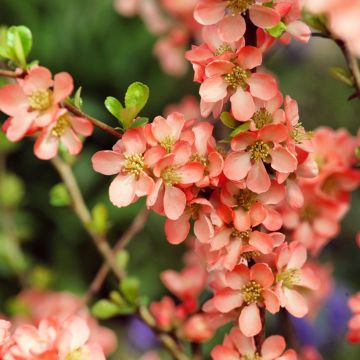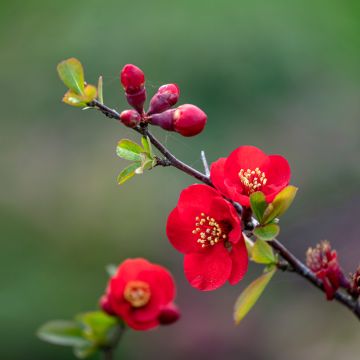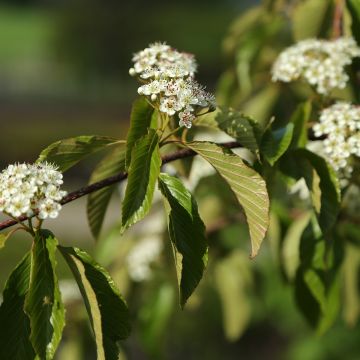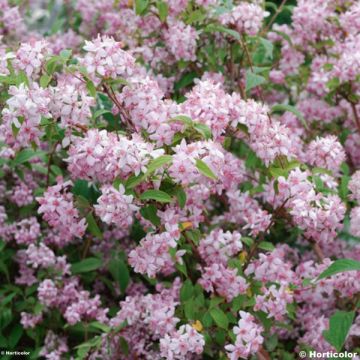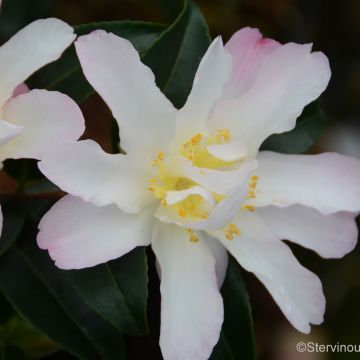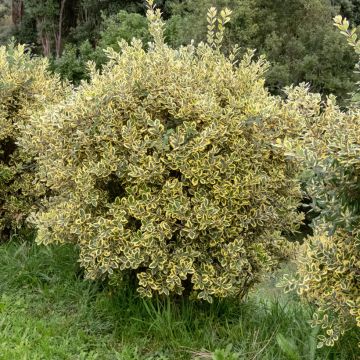

Chaenomeles speciosa Scarlet Storm - Flowering Quince


Chaenomeles speciosa Scarlet Storm - Flowering Quince


Chaenomeles speciosa Scarlet Storm - Flowering Quince


Chaenomeles speciosa Scarlet Storm - Flowering Quince
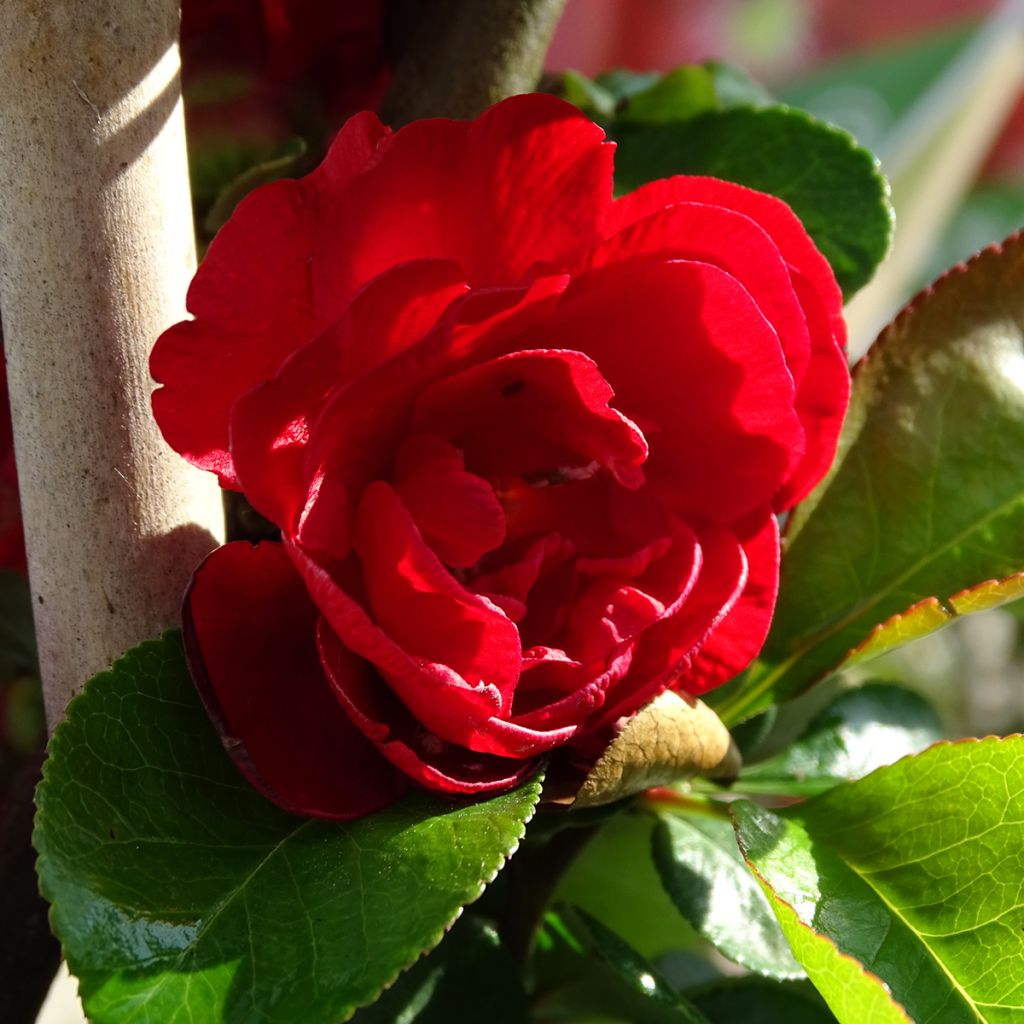

Chaenomeles speciosa Scarlet Storm - Flowering Quince


Chaenomeles speciosa Scarlet Storm - Flowering Quince


Chaenomeles speciosa Scarlet Storm - Flowering Quince


Chaenomeles speciosa Scarlet Storm - Flowering Quince
Chaenomeles speciosa Scarlet Storm - Flowering Quince
Chaenomeles speciosa Scarlet Storm
Japanese Quince, Flowering quince
This item cannot be shipped to the selected country
Delivery charge from €5.90
Oversize package delivery charge from €6.90
More information
Schedule delivery date,
and select date in basket
This plant carries a 24 months recovery warranty
More information
We guarantee the quality of our plants for a full growing cycle, and will replace at our expense any plant that fails to recover under normal climatic and planting conditions.
From €5.90 for pickup delivery and €6.90 for home delivery
Express home delivery from €8.90.
Oversize package: home delivery by special carrier from €6.90 per order..
Express home delivery from €8.90.

Does this plant fit my garden?
Set up your Plantfit profile →
Description
The Japanese Quince or Chaenomeles speciosa 'Scarlet Storm' is a brilliant and floriferous novelty, displaying along its inermous branches very large double camellia flowers, of a dark and deep red, with a golden heart. They herald, by the dozens, the beginning of spring with a fanfare, transforming this slightly stiff shrub into an incandescent bouquet. This variety is drought-resistant once established and does not produce fruit. It is generous and easy to grow, produces more flowers in the sun, and is easy to slot into a small garden. Its flowering branches are magnificent in the first bouquets.
The 'Scarlet Storm' Japanese Quince comes from Chaenomeles speciosa, a thorny shrub native to China and belonging to the Rosaceae family. This variety was recently obtained in North Carolina, United States, and differs from the typical species in its more modest growth, its inermous branches, and its fabulous flowering that is not followed by fruit formation. This dense shrub will form a rounded bush, approximately 1 to 1.2 m (3 ft 4 in to 3 ft 11 in) in height and width. Its flowering extends from April to May, for about 3 to 4 weeks. The very large and very fragrant flowers, reaching 5 to 6 cm (2 to 2.4 in) in diameter, are composed of numerous petals that overlap a little like those of certain roses. Then the flower opens up and reveals a yellow stamen heart. The flowers are carried by a very short or even absent pedicel, and grouped in 3 to 5 on the branches of the previous year. The leaves develop after the flowers; they are narrow to lanceolate, 3 to 9 cm (1.2 to 3.5 in) long and 1.5 to 5 cm (0.6 to 2 in) wide, with a beautiful shiny dark green on their upper surface. 'Scarlet Storm', bred and tested in the difficult conditions encountered in the Appalachian Mountains, proves to be particularly hardy and drought-tolerant.
Japanese quinces, like Forsythias and Japanese kerrias, bring us beautiful flowers in their simplicity, so eagerly awaited after a long winter. They are comfortable in all climates, as they are not afraid of heat or cold. They can be cultivated both in isolation and in groups. The 'Scarlet Storm' variety can also be used as a hedge, in the company of fragrant shrubs such as winter honeysuckle (Lonicera fragrantissima) that precedes it, white lilacs that will take over its flowering, followed by buddleias. This small shrub can also form a large ground cover on a slope, in the company of ground cover roses, creeping ceanothus or rosemary, for example. It can also be trained against a wall near the house, paired with a winter jasmine, to be enjoyed every time one passes by.
Report an error about the product description
Chaenomeles speciosa Scarlet Storm - Flowering Quince in pictures
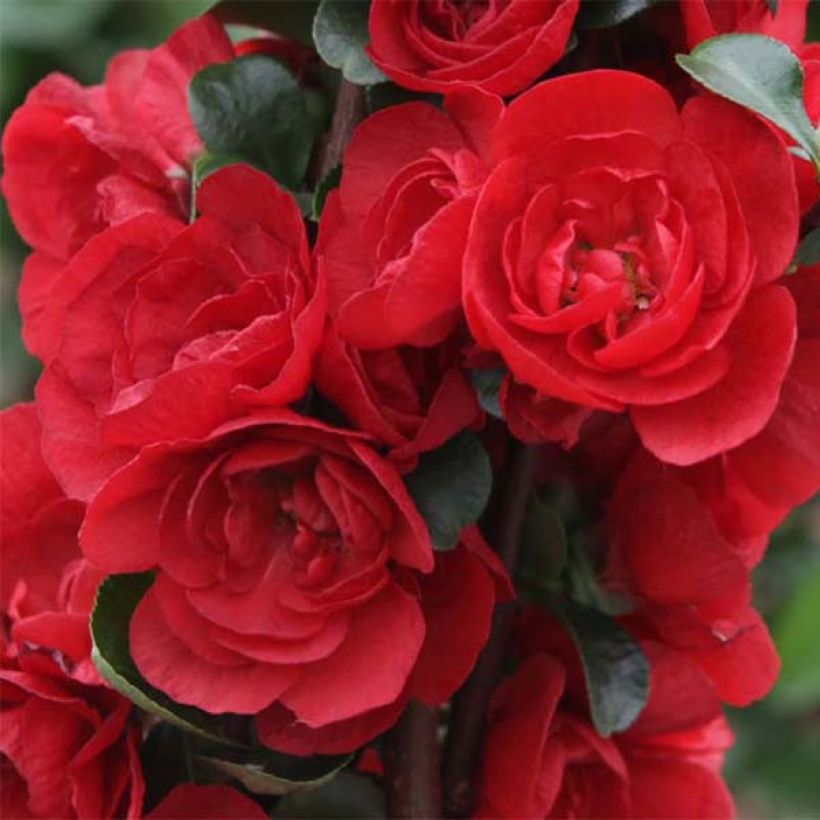

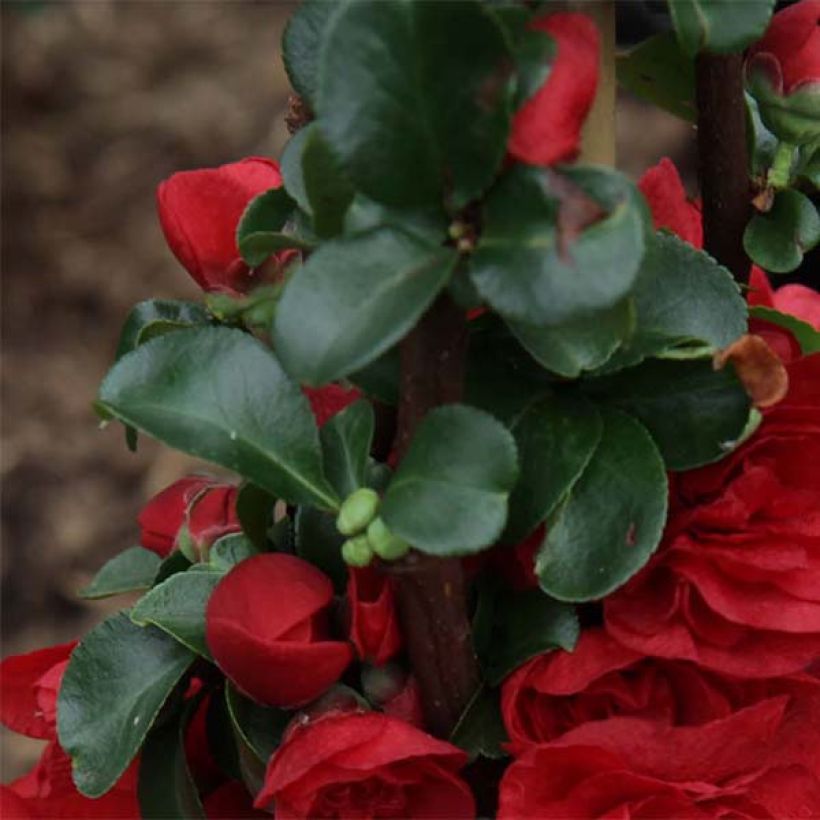



Plant habit
Flowering
Foliage
Botanical data
Chaenomeles
speciosa
Scarlet Storm
Rosaceae
Japanese Quince, Flowering quince
Cultivar or hybrid
Other Chaenomeles - Quince tree
Planting and care
Chaenomeles speciosa 'Scarlet Storm' thrives in the sun, where it becomes more floriferous. Plant it in ordinary, well-drained soil that is somewhat moist, even though it tolerates drought well after three years of growth. It is a very easy plant to grow that also tolerates limestone very well. When planting, mix your soil with compost. When grown as a hedge, space the plants 80 cm (31.5 in) apart. In a border, the plants should be spaced 40 to 60 cm (15.7 to 23.6 in) apart. This Japanese Quince is resistant to pollution and requires little maintenance, apart from occasional pruning of the longer branches in spring as they sometimes become less floriferous.
Planting period
Intended location
Care
-
, onOrder confirmed
Reply from on Promesse de fleurs
Hedge shrubs
Haven't found what you were looking for?
Hardiness is the lowest winter temperature a plant can endure without suffering serious damage or even dying. However, hardiness is affected by location (a sheltered area, such as a patio), protection (winter cover) and soil type (hardiness is improved by well-drained soil).

Photo Sharing Terms & Conditions
In order to encourage gardeners to interact and share their experiences, Promesse de fleurs offers various media enabling content to be uploaded onto its Site - in particular via the ‘Photo sharing’ module.
The User agrees to refrain from:
- Posting any content that is illegal, prejudicial, insulting, racist, inciteful to hatred, revisionist, contrary to public decency, that infringes on privacy or on the privacy rights of third parties, in particular the publicity rights of persons and goods, intellectual property rights, or the right to privacy.
- Submitting content on behalf of a third party;
- Impersonate the identity of a third party and/or publish any personal information about a third party;
In general, the User undertakes to refrain from any unethical behaviour.
All Content (in particular text, comments, files, images, photos, videos, creative works, etc.), which may be subject to property or intellectual property rights, image or other private rights, shall remain the property of the User, subject to the limited rights granted by the terms of the licence granted by Promesse de fleurs as stated below. Users are at liberty to publish or not to publish such Content on the Site, notably via the ‘Photo Sharing’ facility, and accept that this Content shall be made public and freely accessible, notably on the Internet.
Users further acknowledge, undertake to have ,and guarantee that they hold all necessary rights and permissions to publish such material on the Site, in particular with regard to the legislation in force pertaining to any privacy, property, intellectual property, image, or contractual rights, or rights of any other nature. By publishing such Content on the Site, Users acknowledge accepting full liability as publishers of the Content within the meaning of the law, and grant Promesse de fleurs, free of charge, an inclusive, worldwide licence for the said Content for the entire duration of its publication, including all reproduction, representation, up/downloading, displaying, performing, transmission, and storage rights.
Users also grant permission for their name to be linked to the Content and accept that this link may not always be made available.
By engaging in posting material, Users consent to their Content becoming automatically accessible on the Internet, in particular on other sites and/or blogs and/or web pages of the Promesse de fleurs site, including in particular social pages and the Promesse de fleurs catalogue.
Users may secure the removal of entrusted content free of charge by issuing a simple request via our contact form.
The flowering period indicated on our website applies to countries and regions located in USDA zone 8 (France, the United Kingdom, Ireland, the Netherlands, etc.)
It will vary according to where you live:
- In zones 9 to 10 (Italy, Spain, Greece, etc.), flowering will occur about 2 to 4 weeks earlier.
- In zones 6 to 7 (Germany, Poland, Slovenia, and lower mountainous regions), flowering will be delayed by 2 to 3 weeks.
- In zone 5 (Central Europe, Scandinavia), blooming will be delayed by 3 to 5 weeks.
In temperate climates, pruning of spring-flowering shrubs (forsythia, spireas, etc.) should be done just after flowering.
Pruning of summer-flowering shrubs (Indian Lilac, Perovskia, etc.) can be done in winter or spring.
In cold regions as well as with frost-sensitive plants, avoid pruning too early when severe frosts may still occur.
The planting period indicated on our website applies to countries and regions located in USDA zone 8 (France, United Kingdom, Ireland, Netherlands).
It will vary according to where you live:
- In Mediterranean zones (Marseille, Madrid, Milan, etc.), autumn and winter are the best planting periods.
- In continental zones (Strasbourg, Munich, Vienna, etc.), delay planting by 2 to 3 weeks in spring and bring it forward by 2 to 4 weeks in autumn.
- In mountainous regions (the Alps, Pyrenees, Carpathians, etc.), it is best to plant in late spring (May-June) or late summer (August-September).
The harvesting period indicated on our website applies to countries and regions in USDA zone 8 (France, England, Ireland, the Netherlands).
In colder areas (Scandinavia, Poland, Austria...) fruit and vegetable harvests are likely to be delayed by 3-4 weeks.
In warmer areas (Italy, Spain, Greece, etc.), harvesting will probably take place earlier, depending on weather conditions.
The sowing periods indicated on our website apply to countries and regions within USDA Zone 8 (France, UK, Ireland, Netherlands).
In colder areas (Scandinavia, Poland, Austria...), delay any outdoor sowing by 3-4 weeks, or sow under glass.
In warmer climes (Italy, Spain, Greece, etc.), bring outdoor sowing forward by a few weeks.






































